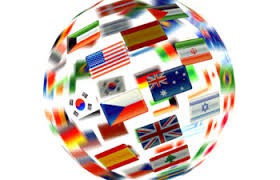Developments in the global economy
Written and accurate as at: Aug 17, 2017 Current Stats & Facts

Australia
Australia’s Consumer Price Index increased by 0.2% in the June quarter to be 1.9% above year ago levels. Large increases were seen in Healthcare (+2.7%) and Alcohol and Tobacco (+0.8%). Significant price falls were seen in Transport (-0.6%) and Recreation and Culture (-3.2%). Inflation is now just below the Reserve Bank’s (RBA) 2-3% target range, whether measured by the headline CPI or the ‘core’ measures that exclude more volatile price changes. Despite this, the result is unlikely to significantly influence the RBA’s monetary policy setting in the immediate future except to reinforce their current ‘no change’ stance. Labour force data showed the unemployment rate steady at 5.6% in June, with employment increasing by 14,000.
US
US employment statistics continue to surprise on the upside with June non-farm payrolls increasing by 222,000 compared to expectations of a 179,000 rise and a 152,000 increase a month earlier. Despite this, the unemployment rose to 4.4% from 4.3% in May with the participation rate rising to 62.8%. This combination of improving employment and rising participation rate is likely to be more important in the eyes of the US Federal Reserve (the Fed) than the marginal rise in the unemployment rate. However, inflation statistics are more muted than expected at this stage of the economic cycle, given the seeming tightness in the labour market. Core inflation increased by only 0.1% in June to be 1.7%, while the core personal consumption expenditure price index – the Fed’s preferred inflation measure – is up 1.5% in the year to June. While inflation readings in isolation are not strong enough to require an immediate US rate hike, we believe the Fed is likely to increase rates at least once more this year to further reduce the monetary stimulus in the economy and financial markets.
Europe
European inflation is showing slow progress against the European Central Bank’s (ECB) 2% target with core inflation increasing 1.1% year on year in June compared to a 0.9% increase a month earlier. The still low inflation readings continue to influence ECB monetary policy decisions with the Bank leaving official rates unchanged at its 20 July meeting and the Board confirming net asset purchases would continue at Euro 60 billion per month at least until the end of 2017. While inflation readings remain stubbornly low, business and consumer confidence have largely maintained improved levels in recent months and are significantly higher than at the start of the year.
China
Chinese real GDP increased by 1.7% in the June quarter to be 6.9% above year ago levels, unchanged from the March quarter. Feeding into this still-robust growth is the 11% rise in retail sales over the same period. The Caixin Services PMI which indicates the strength of the services sector based on surveys of private sector companies has reverted to the 51.1 level in July following an unusual upward spike in May, while the equivalent manufacturing survey improved slightly. Taken together, the surveys are suggesting Chinese business sentiment is at slightly elevated levels, although below the levels seen in late 2016 when the Government’s re-expansionary policies were garnering heightened attention.
Japan
The Bank of Japan’s quarterly review saw it increase its GDP forecast to 1.8% in fiscal 2017 compared to their 1.6% forecast in April. Fiscal 2018 GDP growth was also revised up slightly to 1.4%. While growth forecasts were revised higher, inflation forecasts were revised down with core CPI now expected to be only 1.1% in 2017 compared to the previous forecast of 1.4%.










